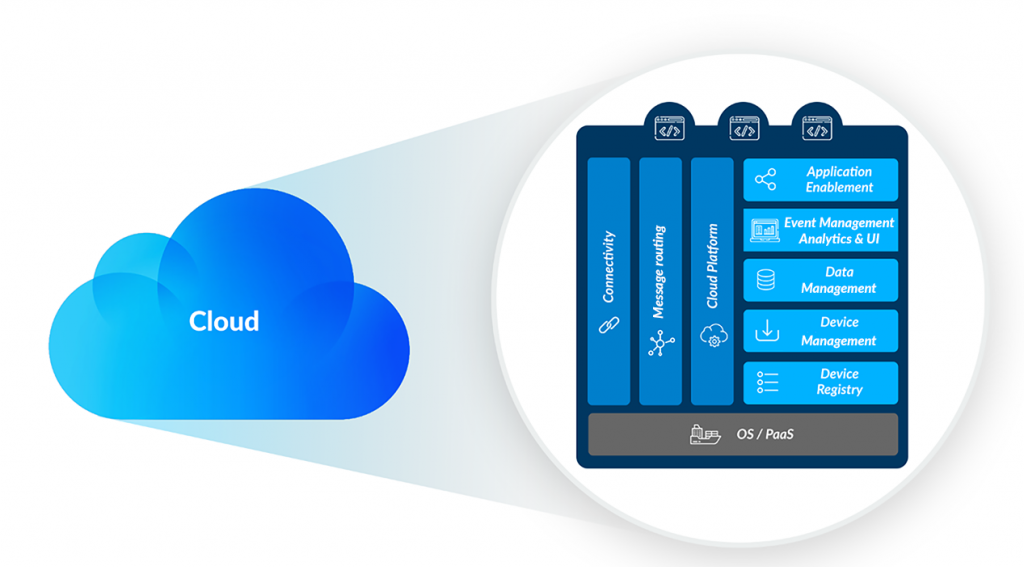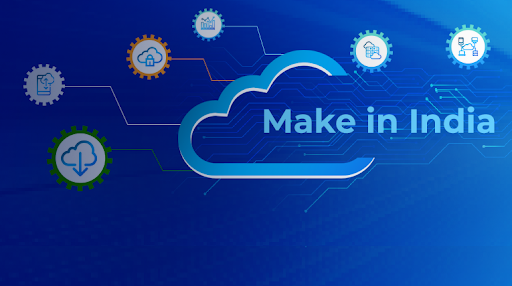Whenever we hear, read or talk about “Make in India”, we immediately attribute it to “Indian Manufacturing Sector”. OEMs in the electronics product sector- Smart Home, Security Surveillance, Smart City, Networking, Automotive, Defense, and Telecom etc. are focused on developing and manufacturing products in India. Though at a high level there seems to be no problem with the definition however I would request my readers to ponder on this one step deeper. Reflecting on the actual customer use cases, today every product comes with a mobile application, using which users control these devices through Cloud. Therefore Cloud is an integral part along with the physical products, which are being manufactured.
Current “Manufacturing” Ideology by OEMs:
During the current pandemic times and the complete global political turnout of the situation, a large number of OEMs are looking for an alternate destination for their manufacturing needs. India definitely has emerged as one of the favorite destinations but we see all talks majorly oriented towards the physical device/product manufacturing. Coming from a company that has end-to-end product design and manufacturing capabilities i.e. Hardware, Software, Mechanical, Manufacturing and Cloud/App, I would like to steer the discussions towards the Cloud Connectivity piece in the entire Manufacturing Eco-System. Today OEMs are weighing on their physical product manufacturing’s destination- thankfully Make in India has been re-energized – there has been absolutely ignorance on the Cloud Connectivity piece.
Many OEMs who are/will manufacture products in India, will also need Cloud – which is Make in India. To reason this lets first discuss Why OEMs need Cloud?
Why OEMs need Cloud?
In every segment today, OEMs are adding features in the products, which their end customers can control from a remote location – after all Internet of Things is the New Normal already. To achieve this connectivity piece (Wi-Fi module/gateway) is added in the product, which enables the product to send data in the form of an APIs to the Cloud; from the Cloud the data is passed to the mobile application interface used by the customers. Likewise users can give command from the mobile application to the device, which is routed via Cloud. Hence “Cloud” is an integral part in the entire system. It is via Cloud that users are able to control the devices through app. All the intelligence and analytics are done at the Cloud.

Most of the OEMs would need a custom cloud application, which is developed on the top of the basic infrastructure provided by public cloud infrastructure providers such as AWS/AZURE/GOOGLE CLOUD Platform etc.- also categorized as IaaS Providers. This cloud application will have all the necessary layers, which will enable a seamless communication between a device and a mobile device/laptop. This part contains all the components such as onboarding, device communication, data storage, AI/ML Logic, Analytics, Notifications, User Management etc.
A typical stack overview of any cloud-computing piece is explained below:

Driving forces for Cloud that is Make In India
Now that it is clear that Cloud is the nucleus of the entire product user experience, we come back to our fundamental question as to why OEMs should not ignore as to who is providing them the complete platform?
- Security and Privacy: Today security of the data is the most critical factor in providing a great user experience. “Data” in todays era is goldmine and slightest breach can cause great havoc in our personal as well as country’s security and sovereignty respectively. Data today can be used for espionage and development of weaponised advanced artificial intelligence technology. For the same reasons time and again top level executives of the worlds tech giants have to face awkward line of enquiries – whether it is Google or Facebook- all had to testify in the US congress on surmounting data and privacy concerns. This proves the paramount importance of security. Cloud gets all the data from the products (devices) as well as users’ mobile application. OEMs while offering these cloud services are responsible for the privacy of their users as well as their country. Hence it’s about time they start looking into this factor and opt the services from a reliable source. Ignoring this factor can have grave consequences.
- Increasing Cloud Complexity: Today IoT use cases are becoming more and more complex. In an attempt to provide greater customer experience management, OEMs have to provide Data Analytics and automation which means increased complexities on the cloud thereby leading to the increase in the development challenge. OEMs have an extremely tough time keeping up with the same. Hence they need more experienced cloud software development teams, who understand the complete system and not just the cloud and application. To overcome the challenge of increased complexity, OEMs need vendors who not only understand the device and system but also get easy access to the device side of things. Hence the path forward is to not only make devices in India but also develop cloud in India.
Path Forward:
Hence Future of Make in India also entails Cloud- as an integral part of the product development – as all the electronic devices are to be connected with the Internet via cloud and operated via the application. Today amidst the pandemic crisis, we foresee India with an exciting future. We are presented with game-changing opportunities for the country’s economy and Cloud has special importance. India with its skilled manpower in both urban and rural certainly calls for make in India and delivers to the world philosophy. On the same lines, VVDN has created a complete eco-system including engineering and manufacturing and cloud development in India for electronics products in the domains of 5G, Wifi, Vision, and IoT.
Click here to know more about VVDN Cloud expertise.
















